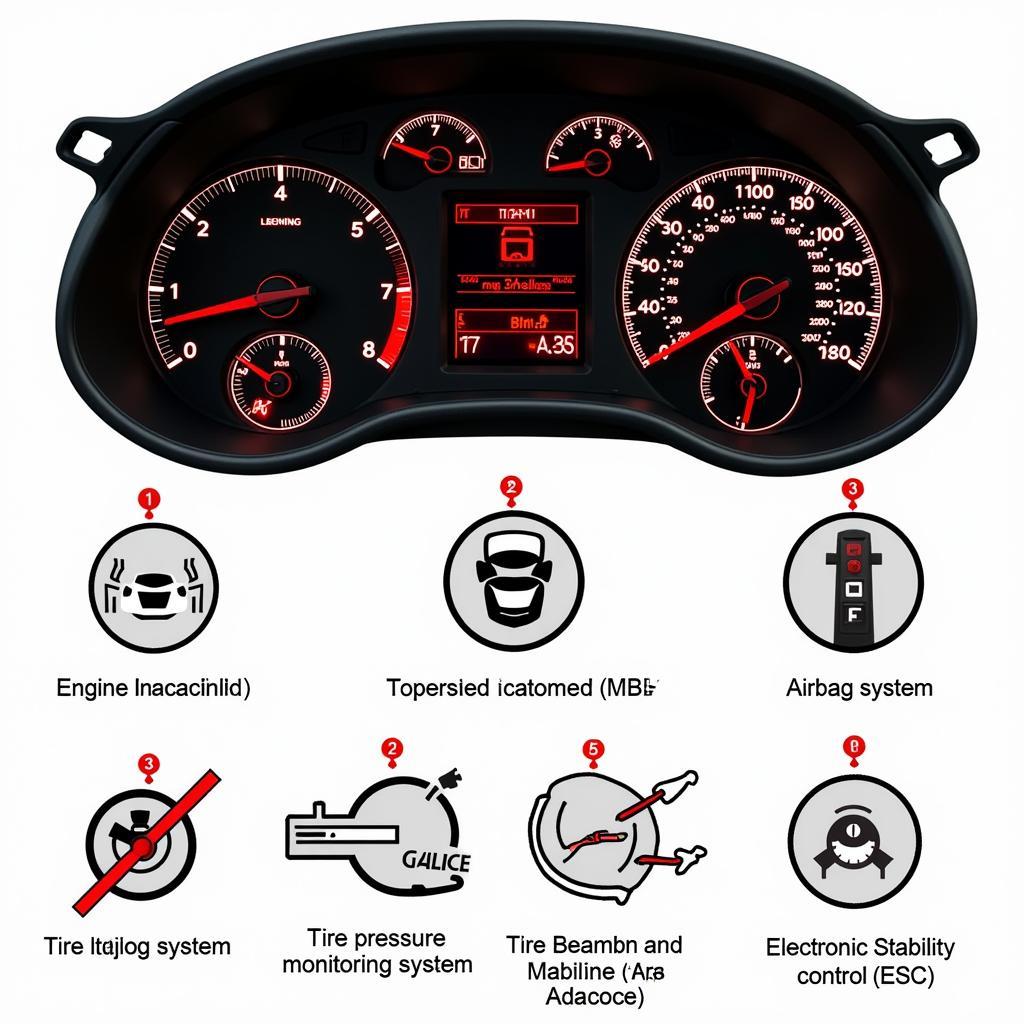You jump into your car, turn the key, and… nothing. Your engine won’t even crank. If you’re dealing with this frustrating situation, chances are your car’s anti-theft system might be the culprit. More specifically, the passive anti-theft device could be preventing your engine from starting. But what is an anti-theft passive device, and how does it work?
Understanding Passive Anti-Theft Devices
A passive anti-theft device is a security feature in most modern vehicles that works silently and automatically to protect your car from theft. Unlike active anti-theft systems that require manual activation like setting an alarm, passive systems are always on guard, working in the background without any input from you.
How Can I Tell if My Car Has a Passive Anti-Theft System?
Most passive anti-theft systems work by using a transponder chip embedded in your car key. This chip transmits a unique code to your car’s engine control unit (ECU) when you attempt to start the vehicle. If the ECU recognizes the code, it allows the engine to start. If not, it assumes a theft attempt and prevents the engine from starting.
Recognizing the Signs
Several clues can indicate a problem with your passive anti-theft system:
- Engine Won’t Crank: This is the most obvious sign. If you turn your key and hear nothing or a single click, but the engine doesn’t crank, it could be your immobilizer system.
- Security Light Flashing: Many cars have a security light on the dashboard that flashes when the immobilizer is active or experiencing a problem. Refer to your owner’s manual to identify the security light for your specific make and model.
- Key Not Detected Message: Some cars display messages on the dashboard like “Key Not Detected” or “Immobilizer Active” when there’s an issue with the passive anti-theft system.
 Car Dashboard With Key Not Detected Warning Light
Car Dashboard With Key Not Detected Warning Light
What You Need to Troubleshoot and Fix Passive Anti-Theft Issues
Troubleshooting passive anti-theft problems often involves specialized equipment and knowledge. Here are some tools and resources you might need:
- Car Diagnostic Scanner: This tool allows you to read and understand the error codes stored in your car’s ECU, potentially revealing problems with the immobilizer system.
- Owner’s Manual: Your car’s owner’s manual can provide valuable information about the specific passive anti-theft system used in your vehicle and offer troubleshooting tips.
- Professional Automotive Locksmith: In some cases, you may need the help of a professional automotive locksmith who specializes in car security systems to diagnose and fix complex immobilizer problems, especially if key reprogramming is required.
 Car Mechanic Using Diagnostic Scanner On Vehicle
Car Mechanic Using Diagnostic Scanner On Vehicle
Troubleshooting Your Passive Anti-Theft System: A Step-by-Step Guide
If you suspect your passive anti-theft system is preventing your car from starting, here’s a general guide to help you troubleshoot the problem:
- Check Your Key Battery: If your key has a remote locking system, try replacing the key battery. A weak battery might interfere with the transponder chip’s signal.
- Try a Spare Key: If you have a spare key, attempt to start the car using that key. If the spare key works, it indicates a problem with the original key’s transponder chip.
- Inspect the Key: Examine your car key for any visible damage or wear, especially around the area where the transponder chip is located. A damaged chip might not communicate correctly with the ECU.
- Consult Your Owner’s Manual: Refer to your car’s owner’s manual for specific troubleshooting tips related to your car model’s immobilizer system. Some manuals offer instructions for resetting the system or synchronizing the key with the vehicle.
- Use a Car Diagnostic Scanner: A car diagnostic scanner, like those offered by Cardiagtech, can read error codes related to your car’s immobilizer system. This information can provide valuable insights into the root cause of the problem.
- Seek Professional Help: If the problem persists, it’s advisable to contact a professional automotive locksmith or a trusted mechanic specializing in car security systems. They have the expertise and tools to diagnose and fix complex immobilizer issues.
FAQs About Passive Anti-Theft Systems
Here are answers to some commonly asked questions about passive anti-theft systems in cars:
Q: Can I bypass my car’s passive anti-theft system?
A: Bypassing or disabling your car’s anti-theft system is strongly discouraged. It leaves your vehicle vulnerable to theft. Additionally, tampering with the system could result in further damage and expensive repairs.
Q: What should I do if my key’s transponder chip is damaged?
A: If your key’s transponder chip is damaged, you’ll likely need to get a new key programmed to your car. Contact a dealership or an automotive locksmith specializing in car key programming.
Q: Can a dead car battery affect my passive anti-theft system?
A: While a dead car battery won’t damage your passive anti-theft system, it can sometimes cause the system to malfunction temporarily. Once the battery is recharged or replaced, the system usually returns to normal. However, if you continue to experience problems, further diagnosis may be necessary.
Q: Is a PASS-key theft deterrent system a passive anti-theft device?
A: Yes, a PASS-key theft deterrent system, also known as a Passlock system, is a type of passive anti-theft device. Learn more about PASS-key systems and how they work.
Q: How can I find out if my car has a passive anti-theft device?
A: Most modern cars come equipped with some form of passive anti-theft system. Check your owner’s manual or contact your car manufacturer for specific information about your vehicle. Here’s a helpful guide to determine if your car has a passive anti-theft device.
Q: Does the 2002 Chevy Tracker have a passive anti-theft device?
A: Yes, the 2002 Chevy Tracker comes standard with a passive anti-theft system. Learn more about the specific anti-theft system in a 2002 Chevy Tracker.
Q: Does the Lexus 2010 IS250 have a passive anti-theft device?
A: Yes, the Lexus 2010 IS250 is equipped with a passive anti-theft system. You can find more details in the owner’s manual or by contacting a Lexus dealership. Here’s more information about passive anti-theft devices and how they work.
Need More Help?
Dealing with car troubles can be stressful and confusing. If you’re experiencing problems with your car’s passive anti-theft system, remember you don’t have to face it alone. For further assistance, explore the range of advanced car diagnostic tools available at CARDIAGTECH. Connect with CARDIAGTECH today for expert advice and solutions tailored to your needs.

